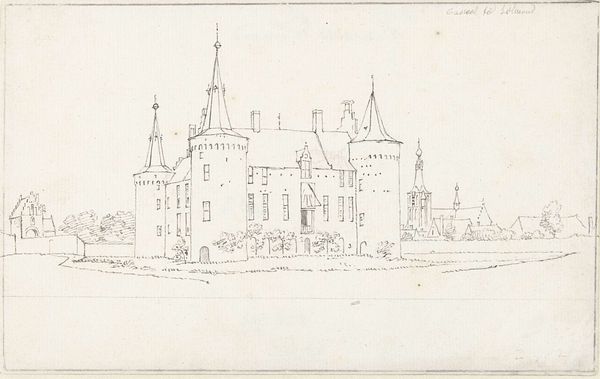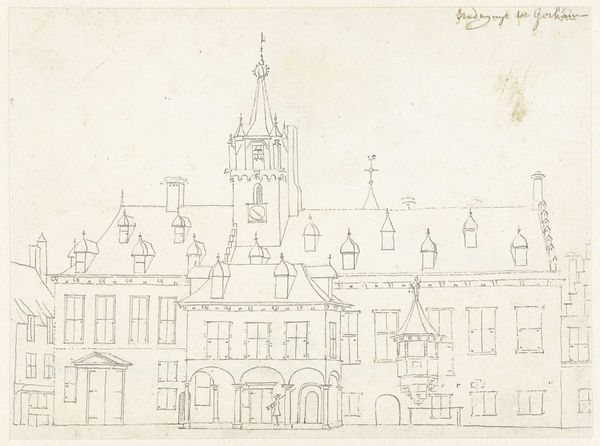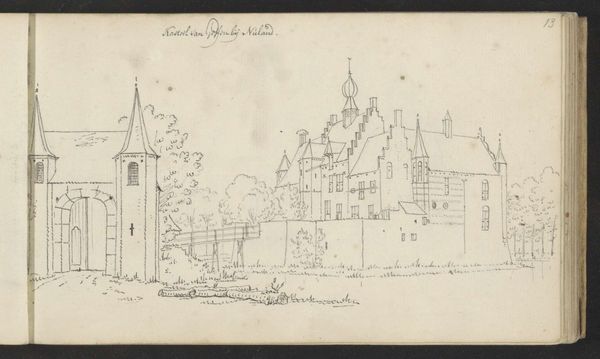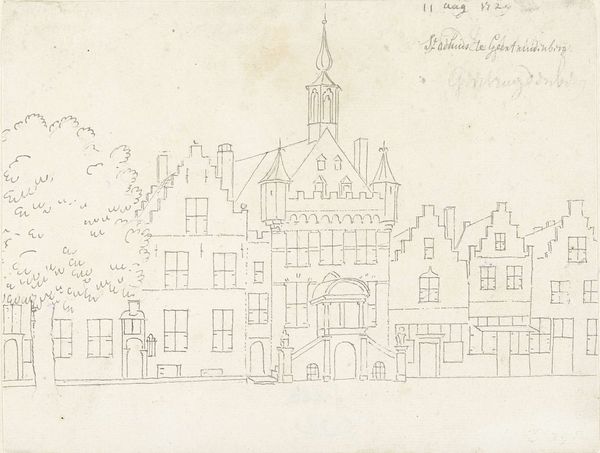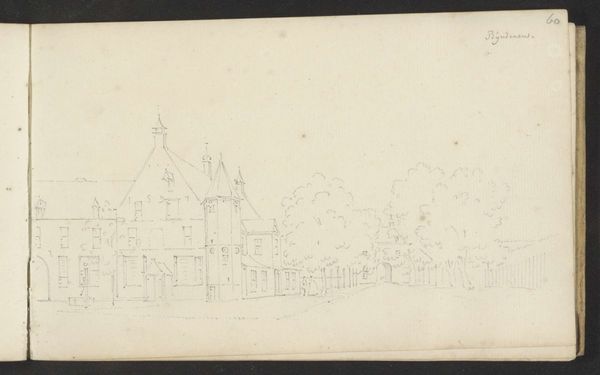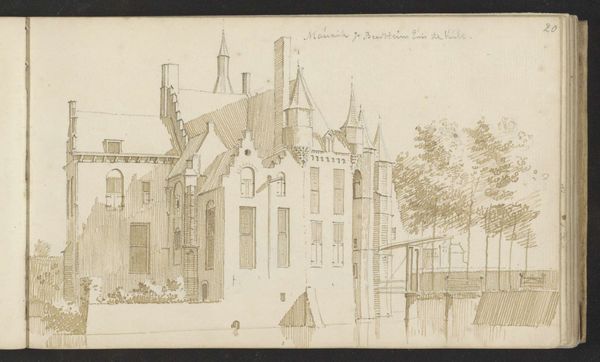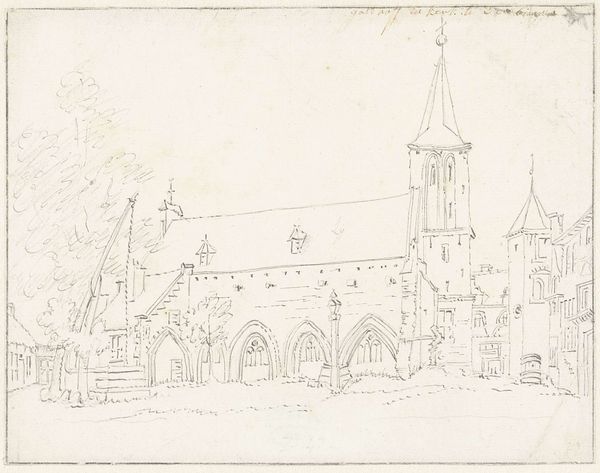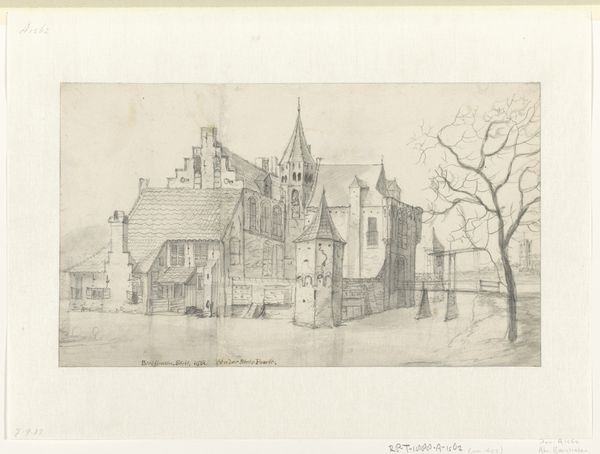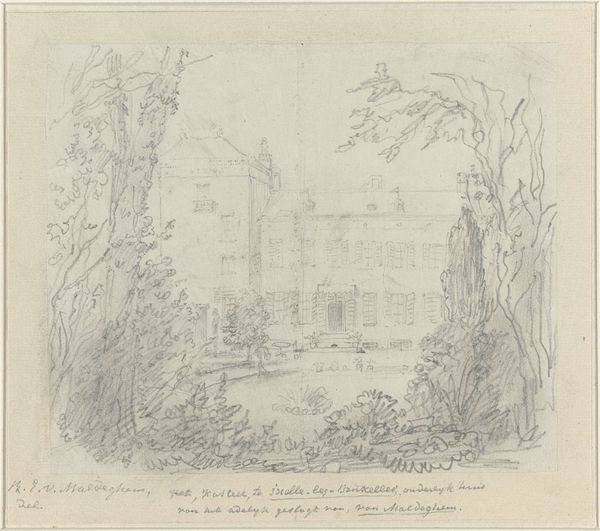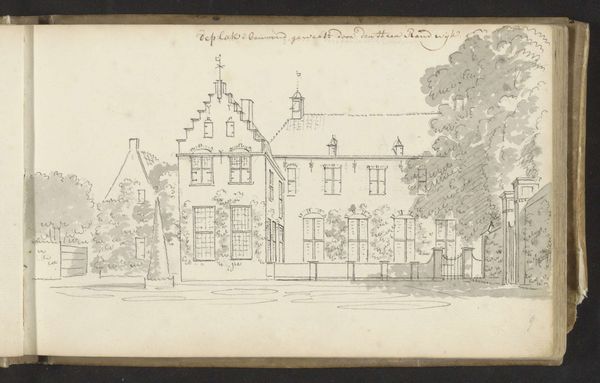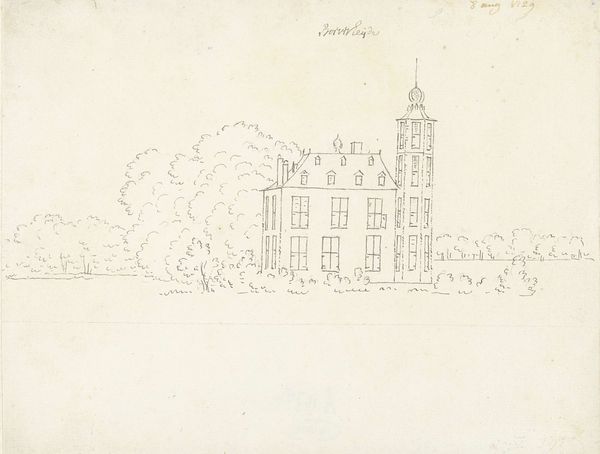
#
architectural sketch
#
quirky sketch
#
pen sketch
#
personal sketchbook
#
sketchwork
#
pen-ink sketch
#
pen work
#
sketchbook drawing
#
storyboard and sketchbook work
#
initial sketch
Dimensions: height 153 mm, width 201 mm
Copyright: Rijks Museum: Open Domain
Editor: Here we have Cornelis Pronk’s "Het kasteel te Gellicum, Gelderland," made in 1731. It's a delicate pen and ink drawing. I'm struck by the precision of the architectural details, even though it has the looseness of a sketch. How do you interpret this work? Curator: I see this sketch as a document deeply embedded in the socio-political landscape of the Dutch Golden Age's decline. Consider Pronk's role: he was commissioned by wealthy patrons, part of a system reinforcing existing power structures. How might this influence the way the castle is depicted, perhaps emphasizing its grandeur to legitimize the patron's status? Editor: That's a perspective I hadn’t considered. I was focused on the visual aspects. Is it possible to see this sketch as more than just a record of a building? Curator: Absolutely! Let's consider what isn't shown. Where are the people who lived and worked there? The farmers, servants, laborers whose lives were directly impacted by the castle’s existence? Their absence speaks volumes about whose stories were valued and preserved. What does that silence tell us about the cultural narratives of the time? Editor: It really changes how I view it. It's not just a pretty drawing, but a reflection of a specific social hierarchy. I never thought about looking at what is absent. Curator: Exactly. By examining those absences, we gain critical insight into the power dynamics that shaped not just the artwork but also the society it represents. Now, what new questions does this raise for you? Editor: It makes me want to research who owned the castle and understand their role in the community, to try to fill in some of those gaps. Curator: That’s the power of art – to spark inquiry and to challenge us to look beyond the surface. Thanks! Editor: Thank you! I've definitely learned to look deeper and consider the unseen stories within an artwork.
Comments
No comments
Be the first to comment and join the conversation on the ultimate creative platform.
